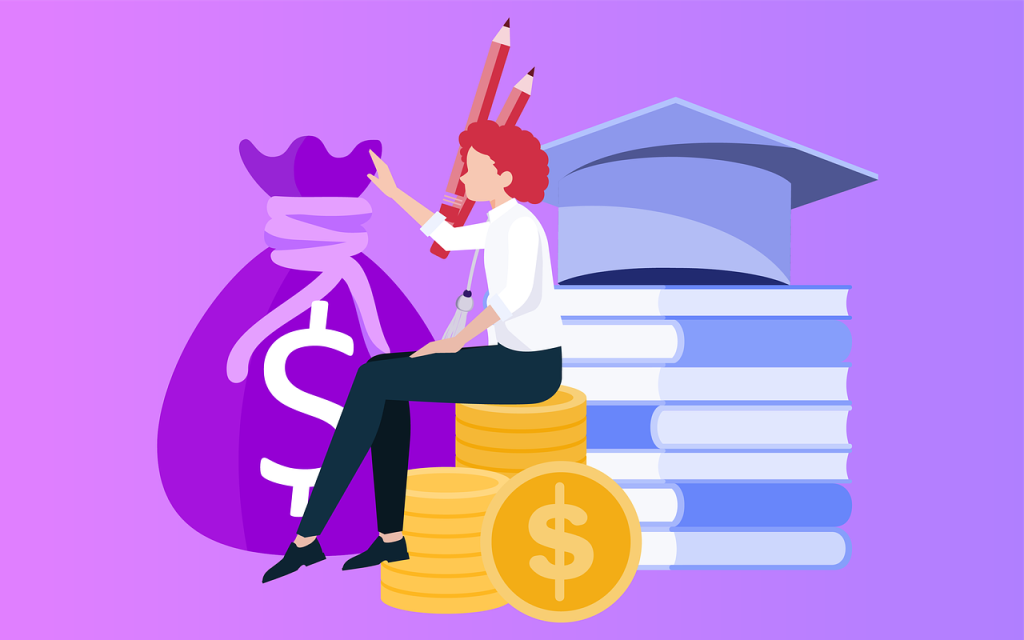Physical Address
304 North Cardinal St.
Dorchester Center, MA 02124
Physical Address
304 North Cardinal St.
Dorchester Center, MA 02124

Breaking Free from Student Loans: Your Path to 100% Forgiveness and a Bright Financial Future
This awesome guide will show you who’s eligible for student loan forgiveness and how to apply. Let’s kick those student loans to the curb! 🥾

In the labyrinth of financial aid for education, student loan forgiveness shines as a beacon of hope for many. With the increasing burden of student debt, Student loans too heavy? We’ll show you how to get some help!
It’s not just about alleviating financial stress; it’s about opening doors to new opportunities without the weight of debt holding us back. Student loan forgiveness: Your path to financial freedom starts here.
We will learn about student loan forgiveness and what you need to qualify for it. We’ll walk through the application process, offering insights and tips to ensure clarity and success.
If you work in public service, teach, or pay student loans, there might be a forgiveness program for you. By the end of this article, you’ll know more about student loan forgiveness and how it can help you.
Student loan forgiveness refers to the cancellation or discharge of all or part of a borrower’s federal student loan debt. This relief helps borrowers with student loans by forgiving part or all of their debt under certain conditions.
There are different student loan forgiveness programs for different people. Here are the main types:
Each program has specific rules for getting loan forgiveness.. It’s important for borrowers to carefully review these requirements and seek guidance if necessary to ensure they benefit from these opportunities.
To be eligible for student loan forgiveness, we must meet specific criteria that vary depending on the forgiveness program we’re applying for. Let’s dive into the requirements for some of the key forgiveness programs:
For those of us on an Income-Driven Repayment (IDR) plan, our federal student loans can be forgiven after making 20 to 25 years of qualifying payments, depending on the specific plan. The remaining loan balance is forgiven if we’ve consistently made payments under one of the IDR plans.
The PSLF program is a beacon of hope for those of us working in public service. To qualify, we need to make 120 qualifying monthly payments while working full-time for a qualifying employer, such as government organizations or non-profit institutions.
For teachers, up to $17,500 of our federal student loans can be forgiven if we’ve taught full-time for five consecutive academic years in a low-income school or educational service agency. This program specifically supports those of us dedicated to educating the next generation.
This program offers relief for borrowers who are totally and permanently disabled. We can have our federal student loans discharged, freeing us from the obligation to repay the loans due to our disability status.
For those of us who have served in the military, there are specific forgiveness programs that acknowledge our service. These programs often have particular criteria that need to be met, which typically include a combination of service duration and type of service performed.
Understanding these criteria is crucial for us to navigate the path towards loan forgiveness effectively. Each program has its nuances and requirements, so it’s imperative that we review the details carefully and seek guidance if necessary to ensure we meet the eligibility requirements.
To start the application process for student loan forgiveness, first ensure that you have federal loans by checking at StudentAid.gov . For those with FFELP or Perkins loans, consolidation might be necessary before applying for forgiveness .
While the initial application for student loan forgiveness does not require documentation, keep in mind that you may need to provide proof of eligibility if requested by the Education Department as part of their fraud prevention measures .
By carefully following these steps and avoiding common pitfalls, you can effectively understand the application process for student loan forgiveness. Remember, each step is crucial for ensuring your eligibility and maximizing the forgiveness you might receive.
Throughout our exploration of student loan forgiveness, we’ve uncovered the essential steps and criteria needed to navigate this life-changing journey. By delving into the various programs available, from Public Service Loan Forgiveness to Income-Driven Repayment plans, we’ve highlighted the routes through which borrowers can alleviate the financial burden of their education loans.
It’s clear that understanding these options and the eligibility requirements is crucial for those seeking financial freedom, underscoring the importance of careful and informed participation in the application process.
Loan forgiveness gives hope to many by promising a future without student debt. . By adhering to the outlined steps and avoiding common pitfalls, borrowers can maximize their chances of achieving this relief. For more help with student loan forgiveness, visit Educationfinance.online.
1. Is student loan forgiveness automatic after a certain period?
Student loans may qualify for automatic forgiveness if they have been in repayment for over 20 or 25 years. If you make payments for 240 or 300 months on an IDR plan, your loans will be forgiven.
2. How can I determine if I am eligible for student loan forgiveness?
To get income-driven repayment loan forgiveness, you need to make payments for 20 or 25 years. IDR plans calculate your monthly payments based on your income and family size.
3. What is the approval time for a student loan forgiveness application?
It takes about 90 business days to approve student loan forgiveness after they receive all your papers.
4. How can I check the status of my student loan forgiveness application?
To check the status of your Public Service Loan Forgiveness (PSLF) application, log in to StudentAid.gov. You can track your PSLF application status or progress there. For further inquiries, contact the Federal Student Aid Information Center at 1-800-433-3243.